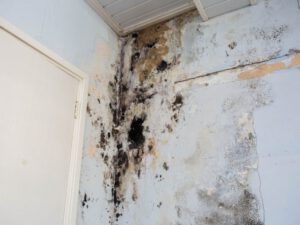Mold Removal – How to Get Rid of Mold in Your Home
Mold can grow on any surface in your home, including wood. It also creates harmful pollutants that can cause health problems. Fortunately, it can be removed and cleaned with a few simple steps. Keeping your kitchen and bathroom exhaust fans running can help keep your home free from mold. You can also use biocide to kill mold.
Biocide kills mold and bacteria and is EPA-registered for mold remediation. Its powerful formula effectively eliminates pathogenic fungi, bacteria, and viruses. It’s the preferred solution of professional mold remediators and water mitigation experts. Read on to learn more about biocide’s powerful cleaning power.
While biocide kills mold and bacteria, it does not destroy mold itself. Mold is a living organism, so it is harmful to both living and dead spores. The use of bleach may cause undetected growth of mold, which could lead to a much larger mold problem down the road.
There are several types of biocides available. However, none of them are 100% effective against all mold and bacteria. Some biocides kill the mold and bacteria but leave the surface slightly wet and slimy. This can lead to a number of problems since dead mold still contains allergenic spores and mycotoxins. As such, biocides are not recommended for indoor mold remediation. Moreover, they are primarily meant for killing bacteria in high-risk environments.
Biocide is a type of chemical compound that kills mold. It has specific effects on various types of fungi. Some types of biocides kill mold spores on contact, while others act as fungicidal or fungistatic agents to inhibit the growth of mold spores.
Biocides can be highly toxic, and the effects of continued use in indoor environments are unclear. Symptoms of biocide poisoning include diarrhea, nausea, and vomiting. This is especially dangerous for children and the elderly. The most effective way to limit mold exposure is to prevent mold growth in the first place by controlling the factors that favor its growth.
In addition to biocide, there are other types of fungicides that are designed to kill bacteria. These include sanitizers. The latter kills bacteria and mold by rendering them inactive, making it harder for these organisms to reappear on the treated surface. A sanitizer can kill spores in addition to killing harmful bacteria.
Biocide is one of the best products available for preventing mold infestations. It is an EPA-registered disinfectant that is effective against bacteria, fungi, and viruses. It is available at most home and business improvement stores.
Hydrogen peroxide is a very safe chemical that can be used to kill mold. It has antifungal, antibacterial, and antiviral properties. It’s also an environmentally friendly alternative to chlorine bleach. Unlike chlorine, hydrogen peroxide doesn’t harm the environment or create toxic fumes. It’s also inexpensive and readily available. You can purchase a bottle of 3% hydrogen peroxide at a drugstore for under a dollar.
While hydrogen peroxide kills mold, it is best to use it on nonporous surfaces and don’t expose it to sunlight, as the light will reduce its effectiveness. You can also scrub mold off surfaces with a detergent solution and warm water. However, hydrogen peroxide isn’t a fungicide and will only kill surface mold.
Hydrogen peroxide has antibacterial properties and is used in disinfecting household surfaces, including floors, walls, and sinks. It is a powerful antimicrobial, so you should regularly clean your home with it to avoid the spread of germs and viruses. You can dilute hydrogen peroxide with water and spray it on hard surfaces.
Vinegar is another powerful alternative to hydrogen peroxide. It is acidic, so it penetrates porous surfaces. It kills mold spores by removing the molded membrane. Distilled white vinegar is the most acidic, so some homeowners apply it directly to their walls or linoleum floors.
Another natural compound that kills mold is borax. This chemical is very effective and doesn’t produce toxic fumes. However, you should always make sure you wear safety glasses and rubber gloves. You can also use a mixture of borax and vinegar to remove stubborn stains and mold. Borax and vinegar can also be applied to walls and ceilings.
Baking soda is also an effective cleaner and can kill various types of mold. It is safe to use on nonporous surfaces and is non-toxic for your family. Baking soda also deodorizes your home and reduces the smell of mold.
